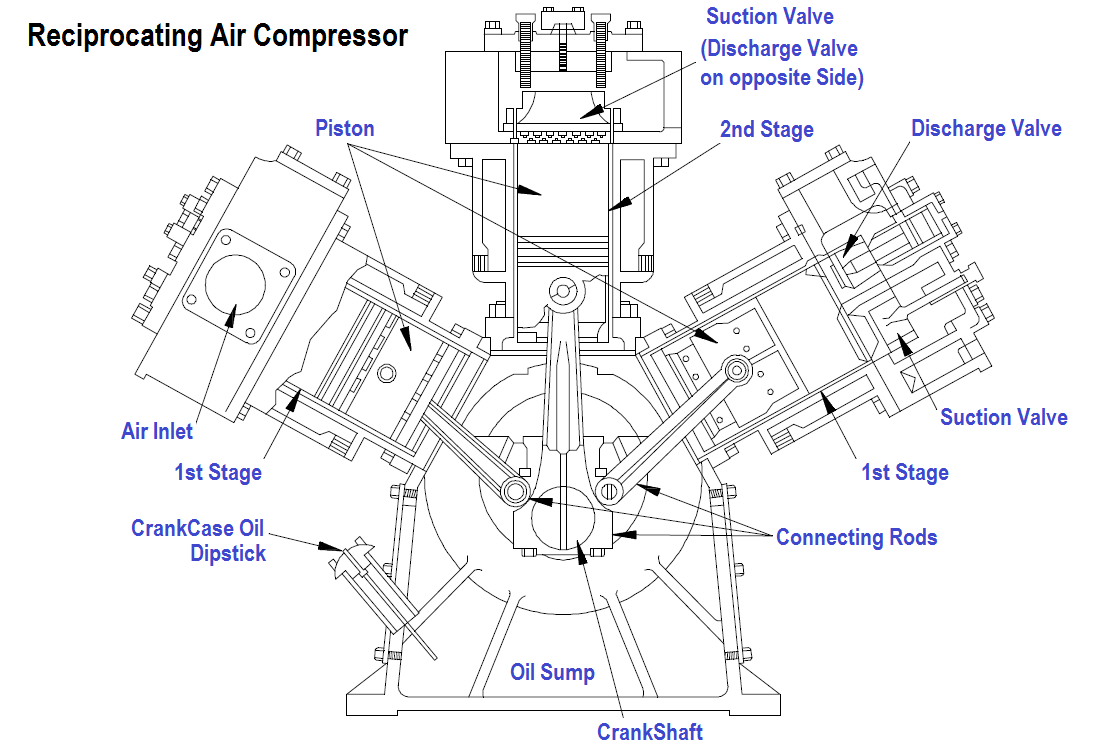Air compressors of various designs are used widely in numerous applications. Compressed air has numerous uses throughout a facility including the operation of equipment and portable tools.
Three types of designs include
Reciprocating Compressors
The reciprocating air compressor, illustrated in Figure 1, is the most common design employed today.

Figure 1 Reciprocating Air Compressor
The reciprocating compressor normally consists of the following elements.
- The compressing element, consisting of air cylinders, heads and pistons, and air inlet and discharge valves.
- A system of connecting rods, piston rods, cross-heads, and a crankshaft and flywheel for transmitting the power developed by the driving unit to the air cylinder piston.
- A self-contained lubricating system for bearings, gears, and cylinder walls, including a reservoir or sump for the lubricating oil, and a pump, or other means of delivering oil to the various parts. On some compressors a separate force-fed lubricator is installed to supply oil to the compressor cylinders.
- A regulation or control system designed to maintain the pressure in the discharge line and air receiver (storage tank) within a predetermined range of pressure.
- An unloading system, which operates in conjunction with the regulator, to reduce or eliminate the load put on the prime mover when starting the unit.
A section of a typical reciprocating single-stage, single-acting compressor cylinder is shown in Figure 2. Inlet and discharge valves are located in the clearance space and connected through ports in the cylinder head to the inlet and discharge connections.

Figure 2 : Single-Acting Air Compressor Cylinder
During the suction stroke the compressor piston starts its downward stroke and the air under pressure in the clearance space rapidly expands until the pressure falls below that on the opposite side of the inlet valve (Figures 2B and 2C). This difference in pressure causes the inlet valve to open into the cylinder until the piston reaches the bottom of its stroke (Figure 2C).
During the compression stroke the piston starts upward, compression begins, and at point D has reached the same pressure as the compressor intake. The spring-loaded inlet valve then closes. As the piston continues upward, air is compressed until the pressure in the cylinder becomes great enough to open the discharge valve against the pressure of the valve springs and the pressure of the discharge line (Figure 2E). From this point, to the end of the stroke (Figures 2E and 2A), the air compressed within the cylinder is discharged at practically constant pressure.